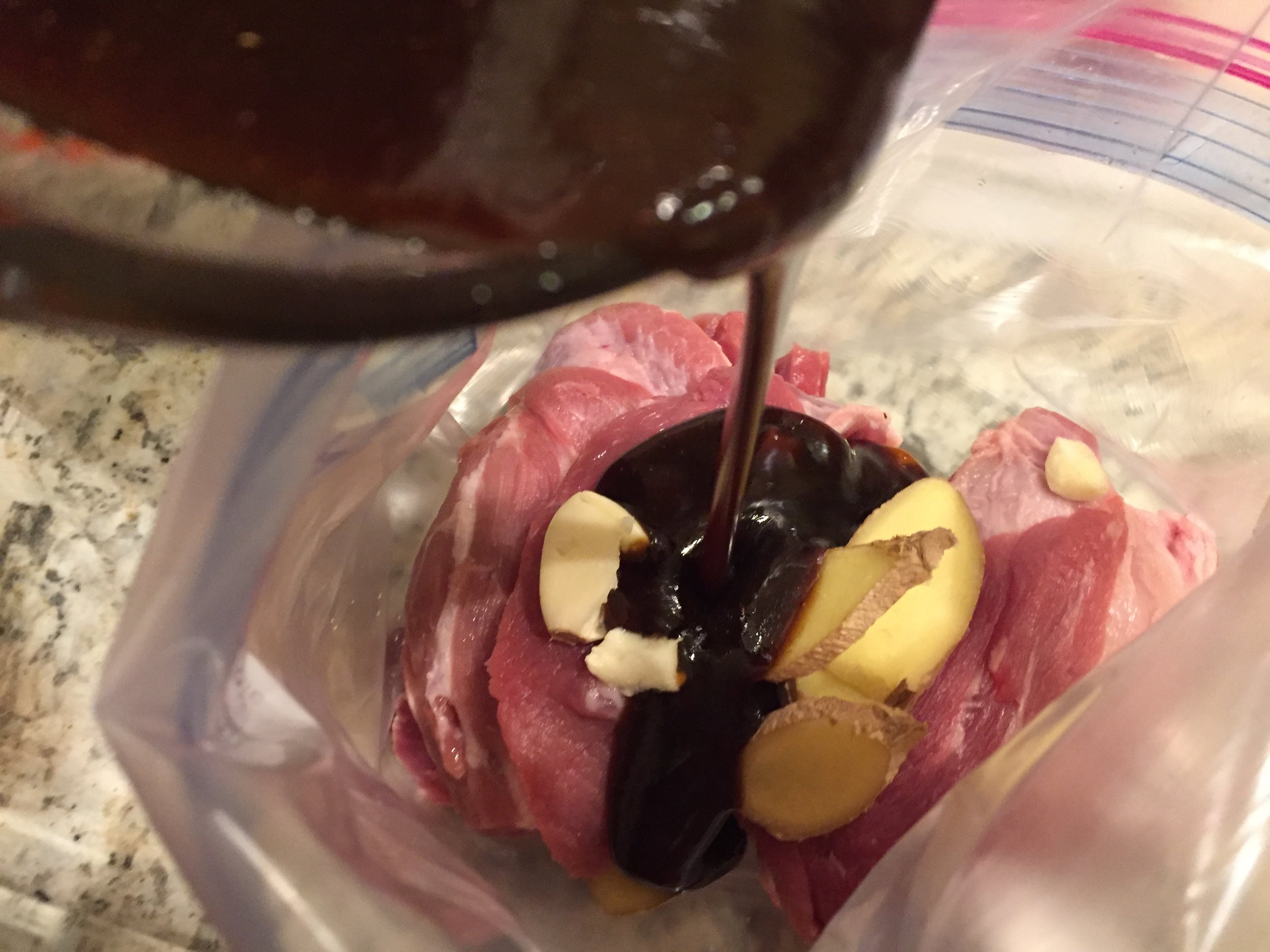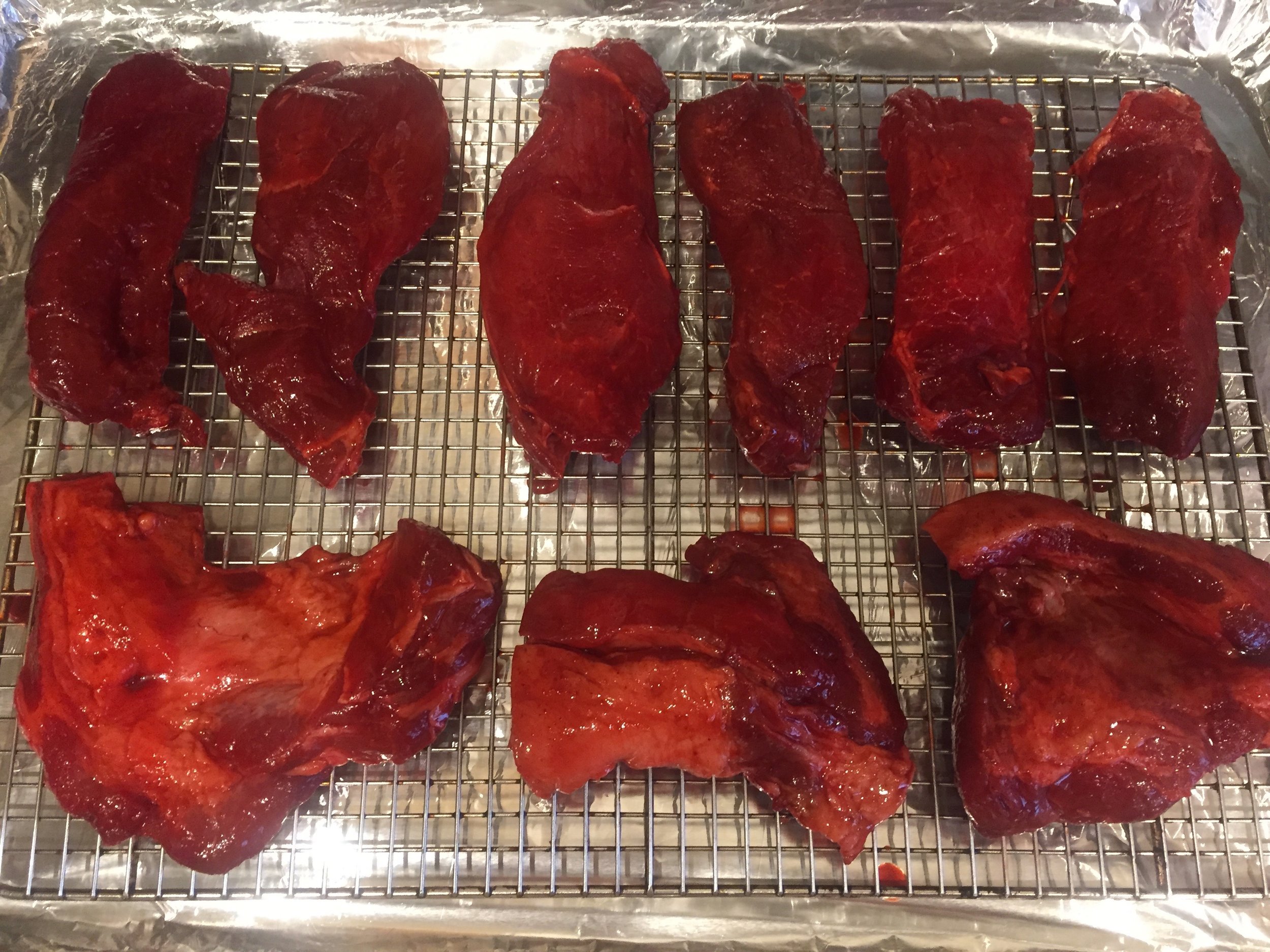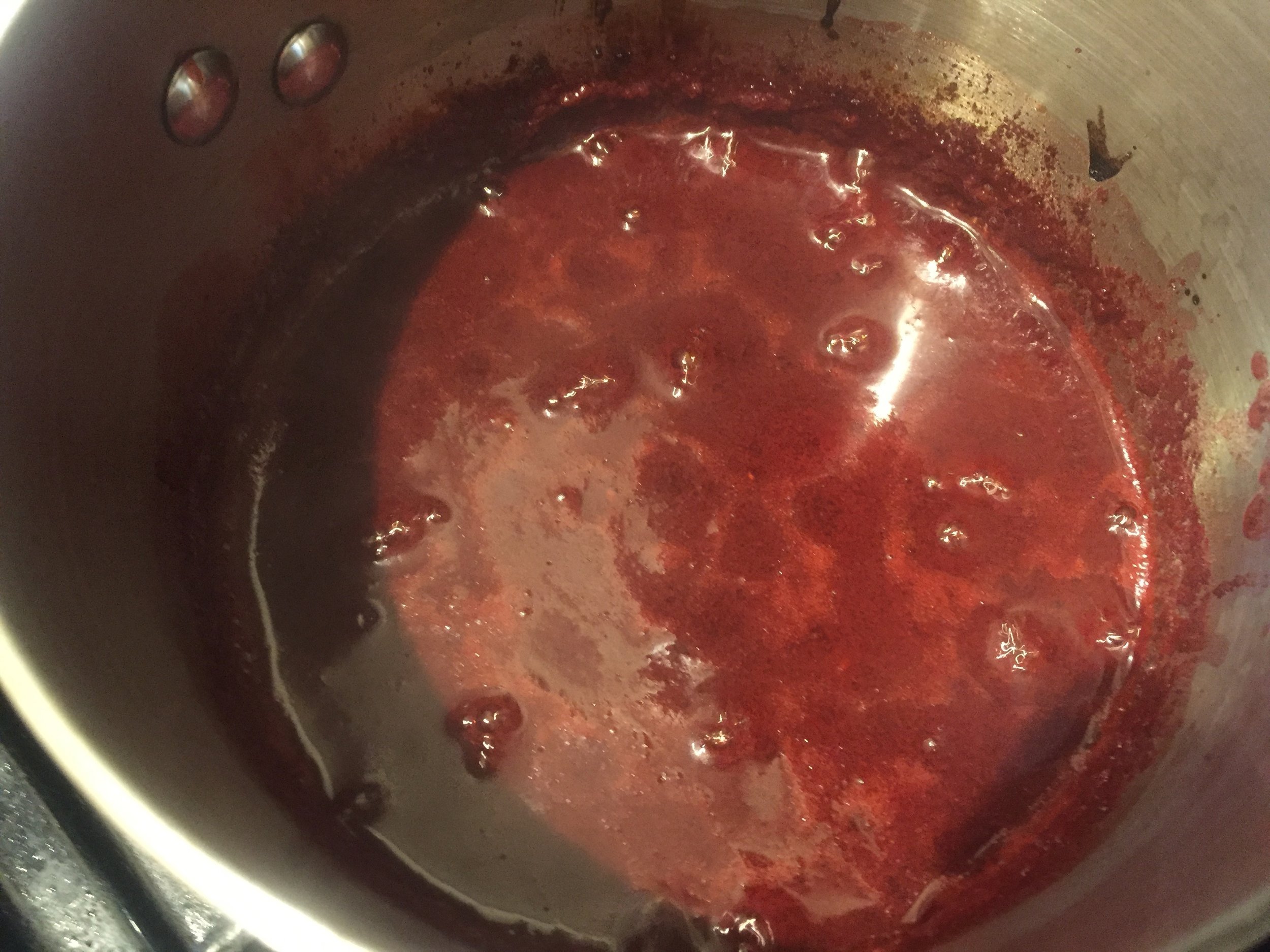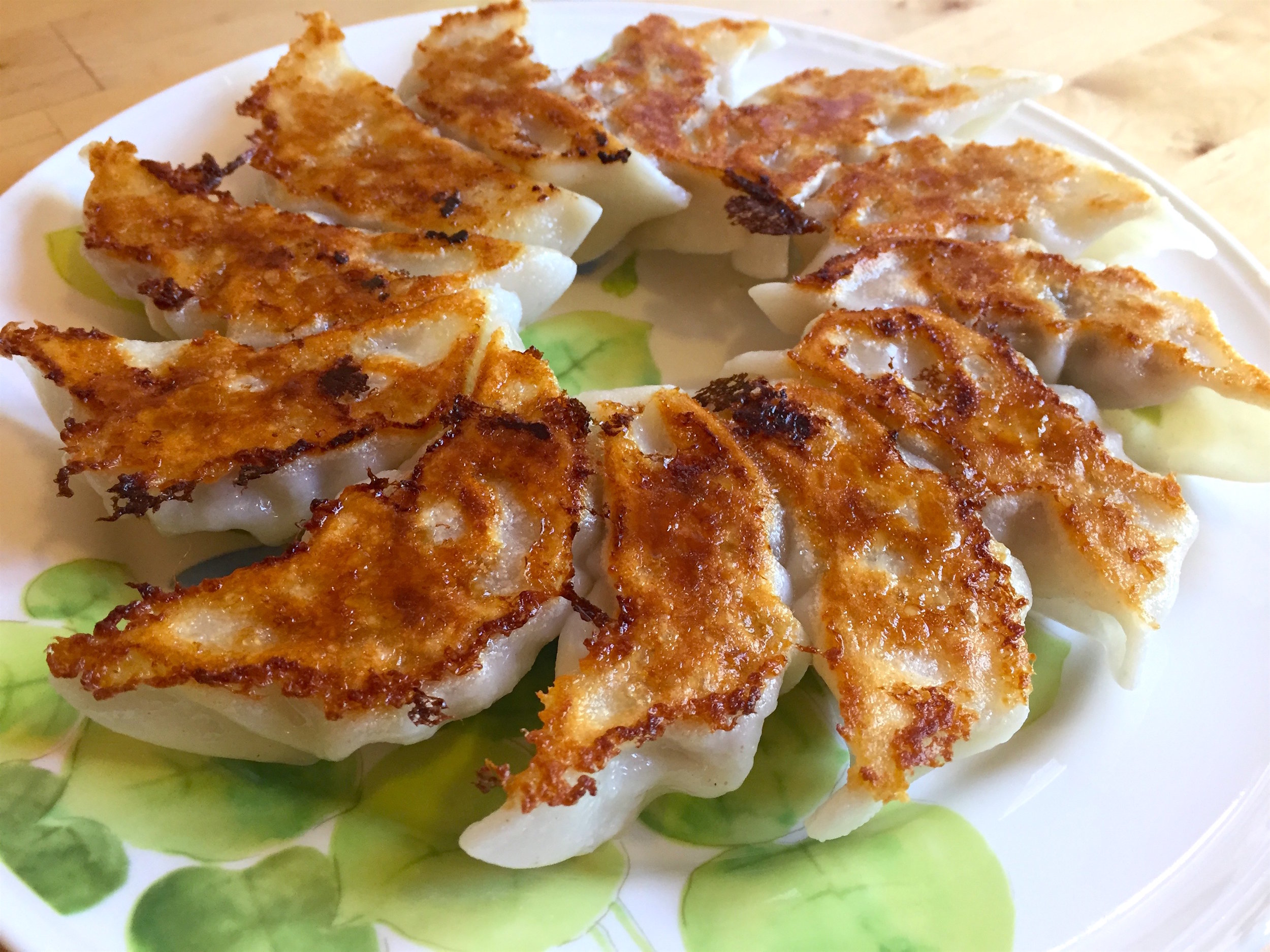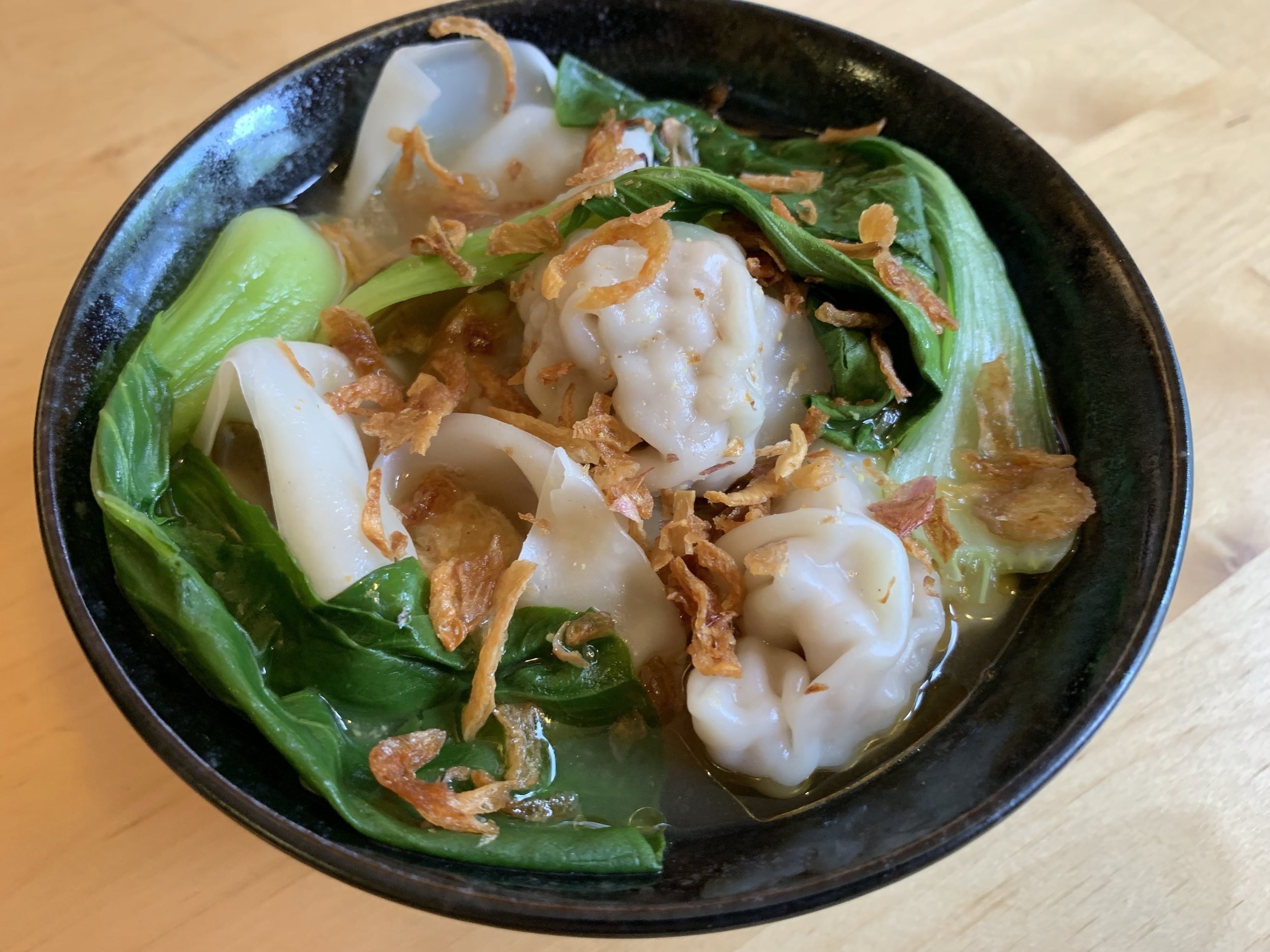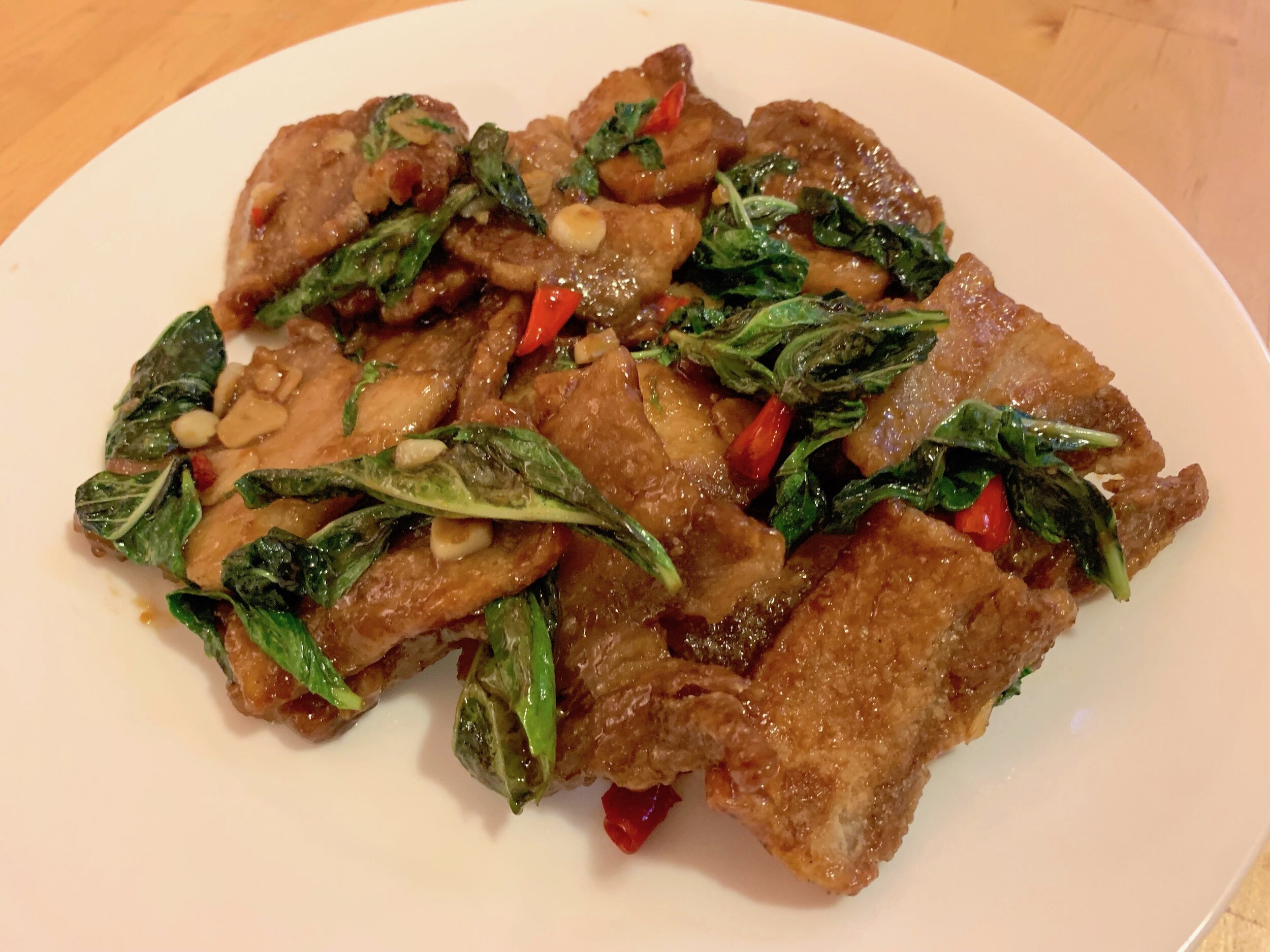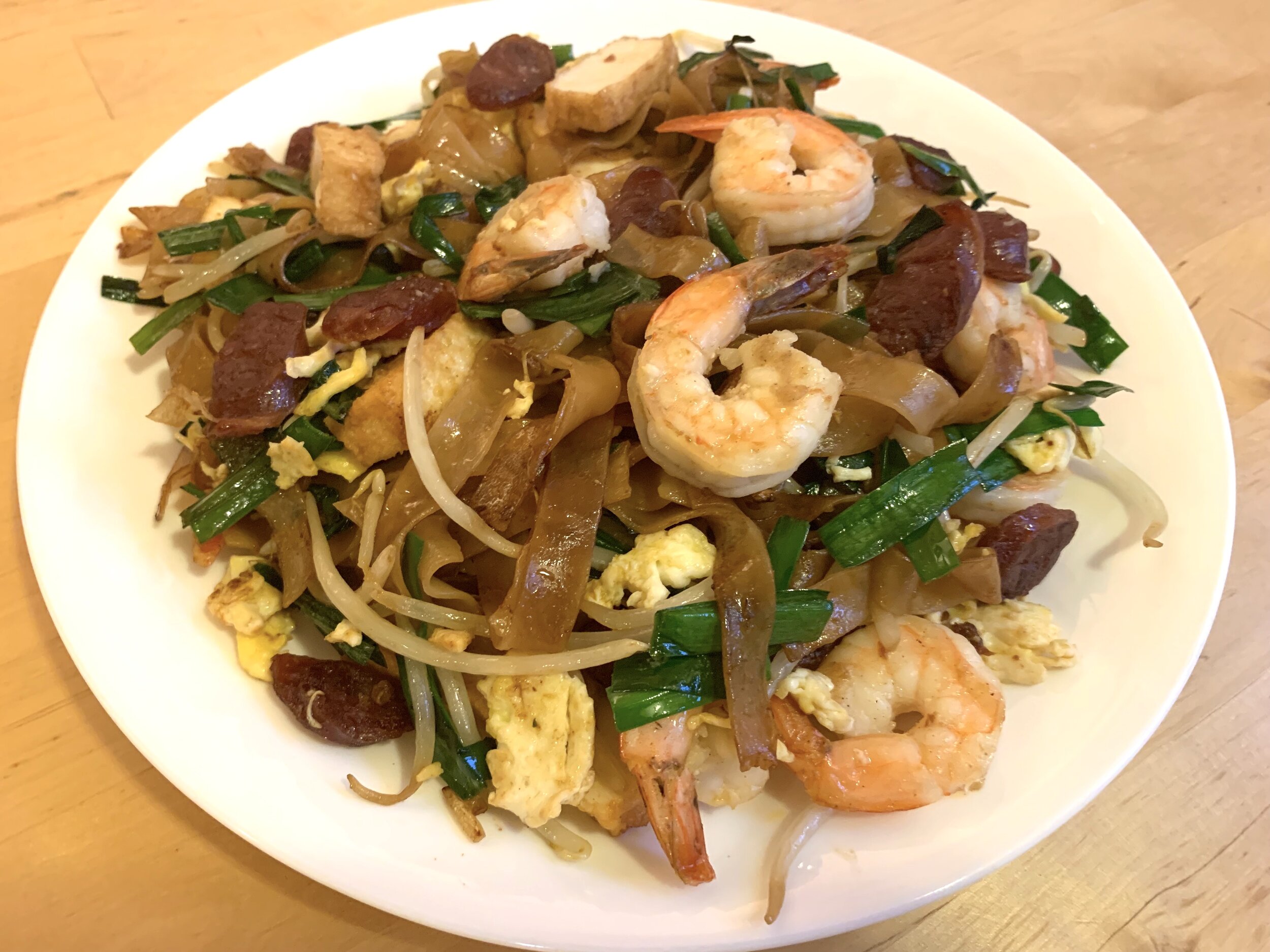Chinese Barbecue Pork
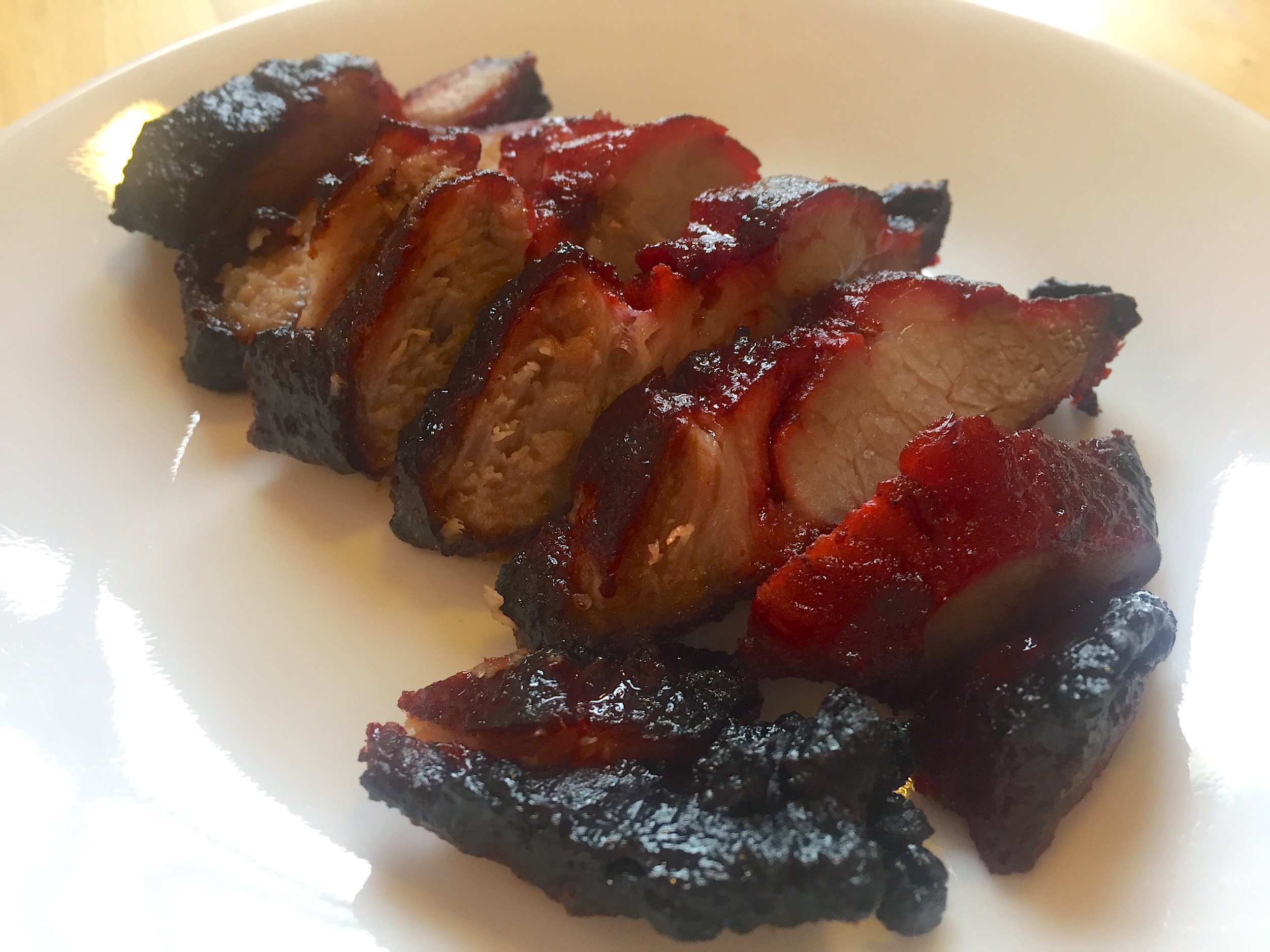
叉燒 (Char Siu)
Chinese barbecue pork is a common sight in Cantonese cuisine—tender slices of pork coated in a sweet and savory glaze, a hint of smoke, and slightly crisp at the edges. Char siu literally translates to “skewered and burned,” which tells you all you need to know about the traditional cooking method. Char siu is a common sight at Chinese barbecue shops, known as siu mei (燒味).[1] These shops specialize in the ancient art of spit roasting various meats over wood fires, and serve a mouthwatering array of roast meats—pork, chicken, duck, goose, and cuttlefish—which can usually be seen hanging in the window for customers to inspect and pick from. I don’t have a spit roast at home, but for those of us living far from a siu mei, this recipe still results in a delicious version of Chinese barbecue pork. When warm, barbecue pork is often served as a main dish, alongside rice and vegetables. Leftover char siu freezes well, and chopped barbecue pork is often used as a filling in buns and pastries, or in fried rice and noodle dishes.
Ingredients
2 lb pork shoulder
½ cup honey
¼ cup hoisin sauce
2 tbsp Shaoxing rice wine
2 tbsp brown sugar
1 tbsp vegetable oil
1 tsp five spice powder
3 garlic cloves
1 inch ginger, sliced
2 tsp red food coloring (optional)
We will begin by making the marinade for our pork. Because this marinade is on the viscous side, we want to ensure that it is well mixed before introducing it to the meat. In a small bowl or measuring cup, combine ¼ cup of honey with an equal amount of hoisin sauce, along with the Shaoxing rice wine, brown sugar, vegetable oil, and five spice powder. If you want the traditional red color of char siu, add two teaspoons of red food coloring to the marinade as well.[2] Mix the marinade to combine and set aside.
While char siu can be made with a variety of cuts of pork, in my opinion the best commonly available cut to use is pork shoulder. [3] We want to cut the pork shoulder into long, flat pieces, about 3 inches wide and half an inch thick. The thickness is particularly important to ensure even cooking. The direction of these cuts also matters. While we will inevitably have leaner and fattier pieces, we will want to distribute the fat among the pieces as evenly as possible. To do this, we will be cutting the pieces perpendicular to the outer layer of fat on the pork shoulder. We also want to cut these large pieces roughly parallel to the grain. This will minimize the fiber length and increase tenderness in the smaller slices we will make for service later, which will be perpendicular across each of these pieces.
Place the pork shoulder pieces into a zipper storage bag. Smash the cloves of garlic with the flat of a knife, slice the ginger into large pieces, and add the aromatics to the bag. We want to keep the aromatics in relatively large pieces, so that we can easily remove them from the marinade later. Pour the marinade into the bag and seal it, making sure to push the air out. Move and massage the meat in the bag to coat the pieces of pork. Place the bag in secondary containment to protect against possible leaks, and marinade in the refrigerator for 24-48 hours.
Let us now contemplate cooking strategies. An outdoor grill, particularly a charcoal grill, would be the ideal cooking device, but an oven also works. Regardless of the type of firepower you plan on employing, the general strategy remains the same. To achieve tenderness, we want to break down some of the connective tissue and render a good deal of the fat in the pork shoulder. Additionally, we want to develop a thick glaze on the pieces, with a fair amount of char. To achieve this, we will roast the pork on a relatively low heat, turning and glazing occasionally. Then, we will turn the heat up to high to caramelize and char the glaze.
To oven roast, preheat the unit to 325° F. Line a roasting tray with heavy duty aluminum foil, and place a rack on the tray. Remove the pork from the marinade, and place the pieces on the rack. Reserve the marinade, which will form the basis of our glaze. The pieces should be reasonably well coated with the marinade. Though we don’t need to pat the pieces dry, do try to minimize the amount of marinade dripping off the meat onto the tray. Roast the pork in the oven for 30 minutes at 325° F.
While the first roast is going on, pour the reserved marinade into a saucepan. Add ¼ cup of honey to the saucepan, stir well, and simmer the marinade for about 5 minutes, reducing it into a syrupy glaze. Set the glaze aside to cool.
When 30 minutes have elapsed, remove the pork from the oven. Using a basting brush, glaze the pork, then flip the pieces over and glaze the other side. Return the pork to the oven and roast for another 30 minutes. Remove the pork, flip and glaze again. Crank the oven up to 425° F and return the pork to the oven.
This final, high-temperature roast is the most treacherous phase of this recipe. The objective of this phase of cooking is to caramelize the sugars in the glaze, and to develop a char on the edges of the pork. When properly done, the pork should turn a dark mahogany color, with some deep brown and black at the edges. If we pull the pork too early, it will not have the time at high temperature to develop the signature depth of flavor of this dish—it will taste more like pork coated with soy sauce and honey (not bad, but not the target!). All of this means that we want to push right up to the limit, without burning anything. The high sugar content of the glaze doesn’t give us much of a safety margin, so watch the pork like a hawk through the high temperature phase.
Roast at 425° F for 15 minutes before flipping and basting for a final time. Return the pork to the oven and continue roasting until the pork turns the desired dark mahogany, approximately 15 minutes more.
Let the pork rest for at least 20 minutes before slicing. To serve, slice against the grain of the meat into 1 cm thick slices.[4]
Substitutions
Other cuts of pork which can be used for char siu, including pork belly and tenderloin. I personally don’t recommend using tenderloin for this preparation, as the leanness of that particular cut makes it difficult to properly develop caramelization without drying out the meat. Pork belly works well, but results in a fattier final product.
This marinade also works well for chicken, particularly dark meat. However, the cooking strategy for chicken will be different—proceed as you normally would when roasting chicken thighs and drumsticks.
In China maltose is often used in place of honey in barbecue recipes.
[1] Siu mei literally translates to roast flavor—an apt description for all the dishes traditionally sold there. Usually customers will buy cooked meat from a siu mei and take it home, pairing it with rice and other dishes cooked at home.
[2] Traditionally, the red color in the marinade comes from red fermented bean curd. However, this ingredient is rare and very difficult to find, even in Chinese grocery stores. Most Chinese restaurants will use food coloring here as well.
[3] Most restaurants will use pork neck, but this cut is hard to find in grocery stores.
[4] If we cut the pork shoulder correctly in the beginning, slicing against the grain should be as simple as cutting perpendicular to the long axis of each piece.
Recipe
Prep Time: 10 min Cook Time: 1 hr 30 min Total Time: 1 hr 40 min
(+24 hrs inactive) (2 days)
Difficulty: 3/5
Heat Sources: oven, 1 burner
Equipment: plastic zipper bag, sheet pan, cooling rack, saucepan, basting brush
Servings: 8
Ingredients
2 lb pork shoulder
½ cup honey
¼ cup hoisin sauce
2 tbsp Shaoxing rice wine
2 tbsp brown sugar
1 tbsp vegetable oil
1 tsp five spice powder
3 garlic cloves
1 inch ginger, sliced
2 tsp red food coloring (optional)
Instructions
1. Combine ¼ cup of the honey with the hoisin sauce, Shaoxing rice wine, brown sugar, vegetable oil, five spice powder, and red food coloring to form the marinade.
2. Cut the pork shoulder with the grain into long, flat pieces half an inch thick.
3. Place the pork shoulder pieces into a zipper storage bag, add the garlic and ginger slices, then pour over the marinade.
4. Seal the bag, massaging the meat to coat the pieces, and marinade in the refrigerator for 24-48 hours.
5. To roast, preheat your oven to 325° F. Prepare a foil-lined roasting tray with a rack, remove the pork from the marinade, and place the pieces on the rack. Reserve the marinade.
6. Roast pork for 30 minutes at 325° F.
7. During this first roast, pour the reserved marinade into a saucepan. Add ¼ cup of honey to the marinade, then simmer until the marinade becomes a syrupy glaze, about 5 minutes. Set aside to cool.
8. Remove the pork from the oven. Flip and glaze both sides of the pork with a basting brush, returning the pork to the oven flipped over. Continue roasting for another 30 minutes.
9. Remove from the oven, and increase the temperature to 425° F. Baste again and flip, returning to the oven for another 15 minutes.
10.Remove from the oven, baste and flip for a final time, and return the pork to the oven. Roast until the exterior is sticky and dark, with extensive caramelization and some charred bits, about 15 minutes.
11. Let the pork rest for 20 minutes, then slice against the grain into 1 cm thick slices and serve.




